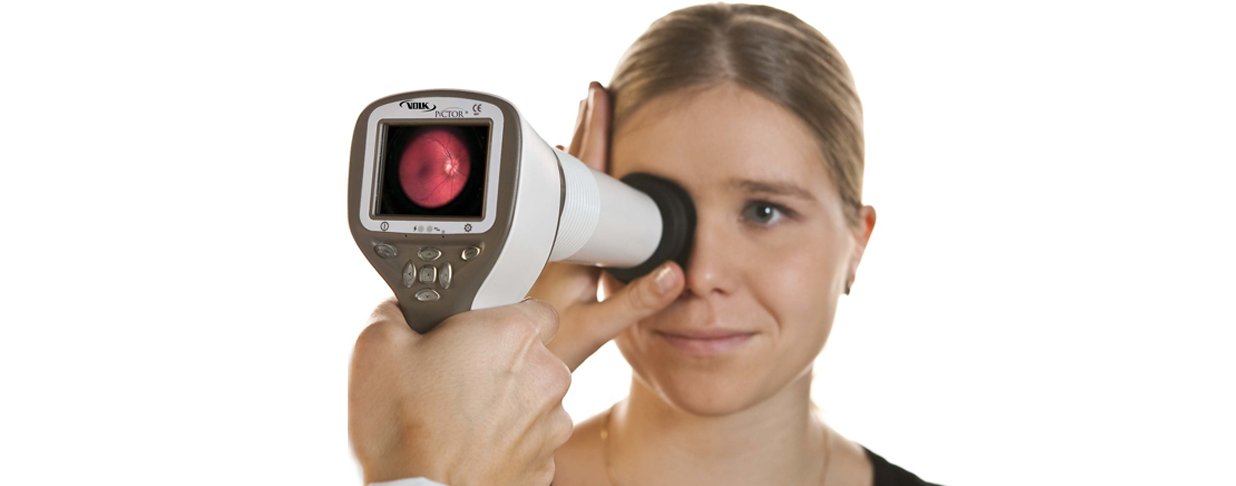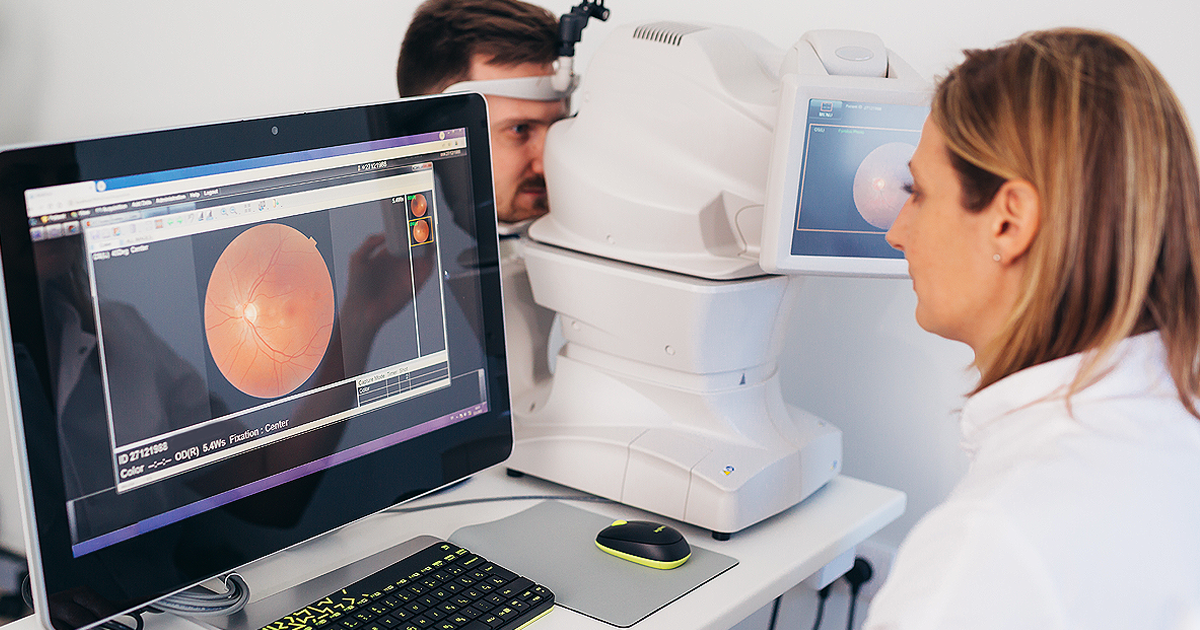I’ve always been pretty good at having my annual eye exams simply because I need glasses or contact lenses to function in life. But since being diagnosed with diabetes 3 years ago, I’ve been even more diligent about seeing my eye doctor for a comprehensive exam that includes dilation.
Even though I’m one of the fortunate people with diabetes who’ve been able to control my blood sugar through diet, exercise and oral medication, eye exams give my eye doctor – and all members of my care team – a peek into the effects of high glucose readings on my body, as well as help identify early symptoms of diabetes-related eye complications before they cause permanent damage.
Eye health is so important for the 1 in 12 Americans who have diabetes[1] that we’re likely to receive eye exam reminders from a variety of sources. And that’s a good thing, because diabetes is the leading cause of blindness in adults[2] and makes it more likely I’ll develop glaucoma and cataracts.[3]
How my primary doctor and eye doctor work together
In the last few months, I’ve received both electronic and print health alerts from my medical plan reminding me that I’m due for an eye exam, and my doctor’s patient portal also alerts me when I log in.
My doctor takes this even further. At my last appointment, she personally requested a copy of my eye exam results so they can be included in my medical record as part of my ongoing care. She knows that my care plan isn’t just about my blood sugar readings and my A1C; my comprehensive eye exams also tell her a lot about how well I’m controlling my diabetes.
My experience reflects the trends EyeMed is seeing among our health plan and commercial clients, all of whom want to reduce downstream medical costs by focusing on prevention and management. The Centers for Medicare and Medicaid (CMS) even includes diabetic eye exams in their ratings measures for health plans. Learn more about these trends from our whitepaper, Vision beyond “routine” – Diabetic Retinal Exam.
And who can blame them? According to the CDC, more than 20% of health care spending is for people with diagnosed diabetes,[4] – totaling $327 billion in health care spending.[5]
How the vision-medical integration works
EyeMed is working to elevate vision care into the whole health care picture for better overall health outcomes, especially for members like me who have high-risk chronic conditions.
• Providers perform a detailed evaluation of the retina (dilation of the eyes as professionally indicated) and provide summary reports to primary care providers for coordination of care.
• Our claims system automatically collects disease diagnosis codes from providers, which we can then extract upon request. Clients can use this information in a variety of ways to integrate eye care into their wellness programs.
• We offer a Diabetic Eye Care Benefit as a rider to our routine vision care benefit that covers diagnostic tests such as gonioscopy, extended ophthalmology, fundus photography and scanning laser (offered at the provider’s discretion) for members who’ve been diagnosed with diabetes.
Here’s a closer look at providers sharing medical and vision information across a secure platform in 4 reasons why vision benefits can reframe medical integration, a blog written by our Medical Director, John Lahr, O.D., FAAO.
Road to better outcomes, reduced medical claims cost
Diabetes management that includes vision care can be a game changer. Not only can individuals like me see better outcomes down the road, but my employer could save money through reduced medical claims costs. By keeping an eye on all aspects of my care, my doctor has the full picture of the effects of diabetes so she can adapt my care as needed. This Diabetes Awareness Month, think about how having vision benefits can allow companies to easily coordinate the care of employees who have diabetes for the good of the business and the good of the person.
BL-1811-CB-945
1Data from the 2014 National Diabetes Statistics Report (released Oct. 14, 2014)
2 Diabetes Care, “Economic Costs of Diabetes in the U.S. in 2012,” April 2013
3 American Diabetes Association: http://www.diabetes.org/living-with-diabetes/complications/eye-complications/
4 Integrated Health Care - A Healthy Solution for Chronic Conditions, Collette Manning, Anthem, via AHIP, 2016
5American Diabetes Association, Economic Costs of Diabetes in the U.S. in 2017




